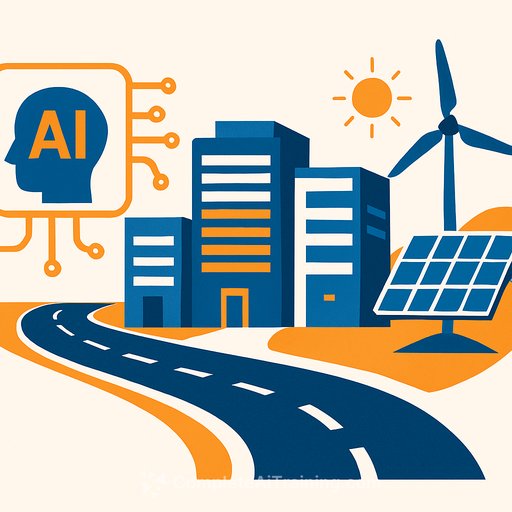America’s AI Action Plan: A New Direction for U.S. Data Center Development
The recent America’s AI Action Plan, together with the Executive Order signed by President Trump on July 23, 2025, signals a significant change in how the U.S. approaches data center development. This new strategy prioritizes federal coordination, national defense alignment, and integrated energy solutions for large-scale AI data centers.
The Executive Order titled “ACCELERATING FEDERAL PERMITTING OF DATA CENTER INFRASTRUCTURE” targets AI-centric data centers that consume over 100 MW of power. It enforces Pillar II of the AI Action Plan, treating AI infrastructure as a strategic asset critical to both economic growth and national security. This marks a decisive move away from slow, fragmented, and regulation-heavy development processes toward streamlined, federally coordinated, and energy-aligned hyperscale deployments.
President Trump’s statement in the AI Action Plan preamble leaves no doubt about the urgency:
"Today, a new frontier of scientific discovery lies before us, defined by transformative technologies such as artificial intelligence… Breakthroughs in these fields have the potential to reshape the global balance of power, spark entirely new industries, and revolutionize the way we live and work. As our global competitors race to exploit these technologies, it is a national security imperative for the United States to achieve and maintain unquestioned and unchallenged global technological dominance. To secure our future, we must harness the full power of American innovation."
The White House is fast-tracking AI-ready data center projects by integrating permitting processes and aligning development with national security goals. This approach shifts the focus from local opposition and regulatory delays to global competitiveness and strategic importance.
Eligibility for Federal Support and Benefits
Projects that qualify for expedited federal support generally include AI data centers demanding at least 100 MW of power. However, qualifying projects extend beyond just data centers. They also cover the essential energy infrastructure—such as power generation, natural gas pipelines, and transmission lines—that supports these facilities.
Key criteria include:
- Minimum $500 million investment.
- Projects designated as critical for national security by relevant federal departments including Defense, Interior, Commerce, or Energy.
Because AI leadership is deemed a national security priority, even projects that don’t fully meet the scale requirements may benefit from the Executive Order's provisions.
Key Benefits of Federal Involvement
- Financial Incentives: The Secretary of Commerce will offer loans, grants, tax incentives, and offtake agreements to qualifying projects.
- Streamlined Environmental Review: Agencies will apply categorical exclusions under the National Environmental Policy Act (NEPA), allowing certain projects to bypass lengthy Environmental Impact Statements (EIS).
- FAST‑41 Integration: Eligible projects enter the Federal Permitting Improvement Steering Council’s FAST‑41 process, ensuring transparent, fixed timelines and progress tracking.
- EPA Regulatory Reforms: Expedited permitting under Clean Air, Clean Water, and other environmental laws, plus identification of brownfield and Superfund sites for redevelopment.
- Energy Co-permitting: Joint fast-track reviews for power generation assets including natural gas turbines, microgrids, small modular nuclear reactors (SMRs), and geothermal systems.
- Biological and Water Permitting: Streamlined Endangered Species Act consultations and nationwide water-related permits.
- Federal Land Use: Federal and Department of Defense lands will be made available for qualifying projects, subject to security considerations.
Industry Impact and Opportunities
These reforms are expected to cut project timelines by months or years, significantly reducing capital risk and attracting private investment. Access to government-backed financial tools improves the investment landscape, encouraging larger and more complex data center campuses. The $500 million investment threshold widens eligibility, inviting more multi-tenant and edge data center developments alongside hyperscalers.
Energy Infrastructure and Grid Modernization
The focus on permitting power infrastructure—substations, pipelines, transmission lines—ensures data centers will not be constrained by local grid limitations. Encouraging hybrid energy ecosystems through nuclear, geothermal, and natural gas assets supports more resilient and flexible power solutions.
With the Department of Energy’s grid modernization initiatives like PermitAI and funding for advanced grid technologies, expect increased investment in distributed energy resources such as virtual power plants and long-duration batteries. Developers can now plan power generation and data center deployment simultaneously, lowering execution risk and speeding project delivery.
Location Strategy and Permitting Framework
Federal lands and repurposed brownfield or Superfund sites provide new options beyond traditional rural sites. This opens the door for eco-industrial reuse and federally backed tech parks. Prioritizing Defense and Interior Department lands may lead to dual-use campuses combining civilian and military computing resources.
The permitting process itself is evolving from a local permit chase to a coordinated federal-state hybrid approach. This new model integrates capital support, concurrent approvals, and strategic siting aligned with national security priorities.
Changing the Playbook for Data Center Development
This initiative rewrites the rules for data center development. Workforce development is a clear focus, with plans to expand Registered Apprenticeships and align technical education to meet demand for skilled trades like electricians, HVAC technicians, and controls engineers essential for AI infrastructure.
These efforts mirror historical large-scale mobilizations for critical national objectives, signaling that AI infrastructure is now a strategic priority. The goal is to enable faster funding, permitting, and deployment of AI data centers at scale.
Industry Collaboration: Data Center Coalition’s Role
The Data Center Coalition (DCC) has played a significant role in shaping this federal strategy. Over the past two years, its recommendations on permitting, infrastructure, and workforce development have found clear reflection in the AI Action Plan and Executive Order.
The DCC’s priorities include:
- Coordinated federal permitting frameworks.
- Recognition of AI data centers and energy infrastructure as national assets.
- Expanded categorical exclusions and modernized NEPA compliance.
- Accelerated siting for transmission and generation tied to data center demand.
- Unlocking federal lands for digital infrastructure.
- Integration of skilled trades and workforce development into planning.
The alignment between the DCC’s advocacy and federal policy signals a new era where the data center industry holds a strategic seat at the federal decision-making table. This foundation supports a broader range of players, from hyperscale operators to multi-tenant and public-private hybrid projects.
Framing AI data centers as critical to national security and economic competitiveness confirms their importance beyond traditional land-use concerns. While challenges remain in execution, this framework sets the stage for accelerated development and deployment of AI infrastructure nationwide.
Executives and strategists involved in AI infrastructure development should closely monitor how these policies unfold, as they will redefine project timelines, funding access, and location strategies.
For those looking to build expertise in AI and related technologies, exploring practical AI training and certification can provide a competitive edge in this evolving landscape. Resources like Complete AI Training offer up-to-date courses aligned with industry needs.
Your membership also unlocks:






